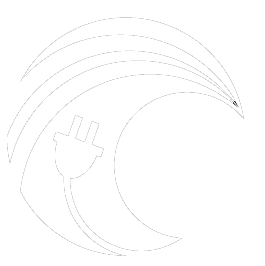24 September 2019
By Ali Trueworthy
As summer comes to a close and fall term brings in new graduate student researchers to the Pacific Marine Energy Center, we want to highlight some of the thesis defenses from the past few months!
In June, University of Washington Ph.D. candidate Emma Cotter earned her doctorate in Mechanical Engineering after working for 5 years with Professor and PMEC Director Brian Polagye. Emma was a part of the Adaptable Monitoring Package (AMP) project, one of the major recent successes in marine energy research. She worked on control software which would enable researchers to investigate the impacts of marine energy technology on marine life. To understand the ways that our ocean friends respond to the presence of a new technology, we must first be able to observe them in a non-disruptive way. Emma set out to do just that!
Cameras, a common choice for ocean observation, were not an option for Emma. “Cameras require light, and light can bias marine life,” she says. If she were to continually observe a marine energy device with cameras, Emma would not be able to effectively assess the behavior of marine life because the presence of the light might make them behave differently. Along with maintaining a covert monitoring presence, Emma also needed to create a system that could detect rare events such as a collision while not overwhelming the server (or the researchers) with data.
A video showing a seal, captured by the Adaptable Monitoring Package. (Mitchell Scott/University of Washington-Applied Physics Laboratory)
She used a multibeam sonar to monitor for wildlife activity using acoustic beams and turned the camera and lights on only when the sonar system sensed an animal of interest. Even though the multibeam system was always collecting data, Emma used a “ring buffer,” meaning that she only stored 60 seconds worth of data at a time. With those 60 seconds of data, Emma’s challenge was to detect, track, and classify targets. When the acoustic beams reflect off of an object and return to the sonar system they create a high-intensity signal that indicates the object’s presence. Emma then tracks the target as it moves through the multibeam field of view.
Emma tested three machine learning methods to identify the type of object or animal that created each target track. She wanted to distinguish between objects of interest, such as schools of fish or seals, and potential false tracks from the current or boat wakes. Emma used sample tracks to test the algorithms in the lab before testing in real-time at the U.S. DOE’s Marine Sciences Laboratory in Sequim Bay, Washington and at the U.S. Navy’s Wave Energy Test Site in Kaneohe Bay, Hawaii. Emma determined which machine learning algorithms worked best for which kind of tracks, what information should be extracted from the tracks for best performance (such as shape and intensity), and how these algorithms could be used most effective for observing the interactions between marine life and marine energy technology.
Emma’s work will open new avenues for understanding the impacts of marine energy on the marine environment, an essential part of responsible development of the renewable energy resource. Emma worked the rest of this summer at UW and now she is off to Wood Hole Oceanographic Institution in Woods Hole, Massachusetts for her next research adventure!
Emma Cotter with the Adaptive Monitoring Package
Reference: Emma Cotter, Advanced Environmental Monitoring for Marine Renewable Energy, PhD Final Examination, June, 2019


